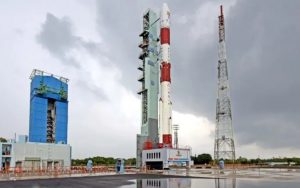The Indian Space Research Organisation (ISRO) on Saturday (November 7, 2020) successfully launched the PSLVC49 from the Satish Dhawan Space Centre (SDSC) SHAR in Sriharikota. India’s Polar Satellite Launch Vehicle in its 51st mission (PSLV-C49) launched EOS-01 as primary satellite along with nine international customer satellites at 3:12 PM IST. The launch was earlier scheduled at 3:02 PM IST but was delayed by 10 minutes.

As per the recent reports, EOS-01 has successfully separated from the fourth stage of PSLVC49 and injected into orbit and all nine customer satellites have also been successfully separated and injected into their intended orbit. PM Narendra Modi also congratulated ISRO and India’s space industry for the successful launch of PSLV-C49/EOS-01 Mission. “In the time of COVID-19, our scientists overcame many constraints to meet the deadline,” tweeted PM Modi. This is to be noted that the EOS-01 is an earth observation satellite intended for applications in agriculture, forestry and disaster management support.
The nine foreign satellites are from – one from Lithuania (R2, technology demonstrator), four from Luxembourg (maritime application satellites by Kleos Space) and four from the US (Lemur multi-mission remote sensing satellites). The customer satellites were launched under a commercial agreement with NewSpace India Limited (NSIL), Department of Space. The launch was live telecast on ISRO’s official website along with its Youtube, Facebook and Twitter channels. The Polar Satellite Launch Vehicle (PSLV) is the third generation launch vehicle of India and is the first Indian launch vehicle to be equipped with liquid stages. After its first successful launch in October 1994, PSLV emerged as the reliable and versatile workhorse launch vehicle of India with 39 consecutively successful missions by June 2017. During 1994-2017 period, the vehicle had launched 48 Indian satellites and 209 satellites for customers from abroad. Besides, the vehicle successfully launched two spacecraft – Chandrayaan-1 in 2008 and Mars Orbiter Spacecraft in 2013 – that later traveled to Moon and Mars respectively